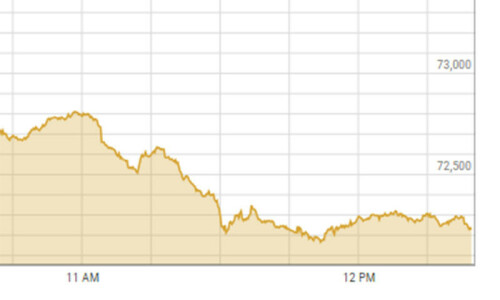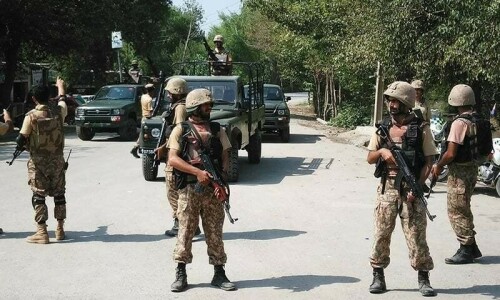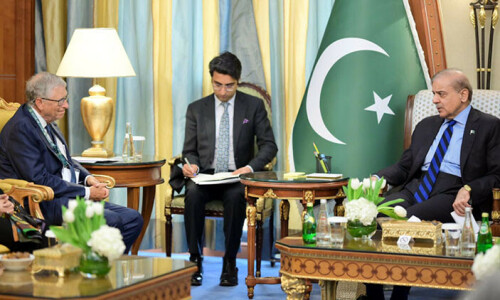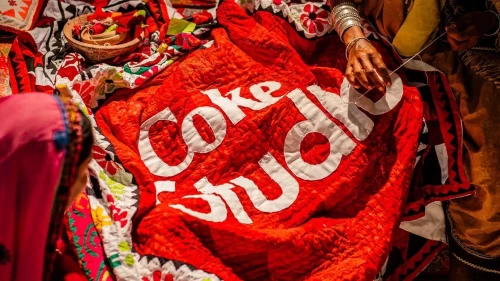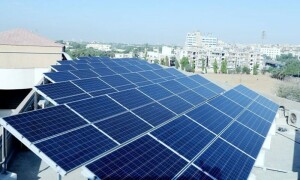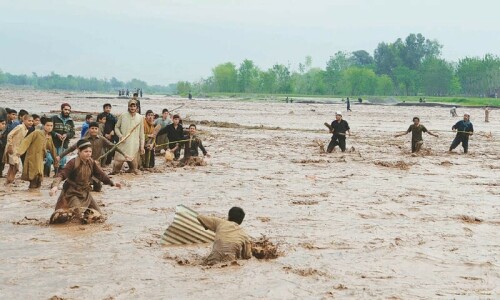
TEHRAN: Iran’s paramilitary Revolutionary Guard launched underground ballistic missiles on Wednesday as part of an exercise involving a mock-up American aircraft carrier in the Strait of Hormuz, highlighting its network of subterranean bases.
Although state television documentaries have focused on operations underground at the bases, all have avoided showing geographic details revealing their locations. Wednesday’s launch from what appears to be central Iran’s desert plateau changes that amid heightened tensions between Tehran and the US over its tattered nuclear deal with world powers and as economic pressures grow.
"We have carried out the launch of ballistic missiles from the depths of the earth for the first time,” Gen. Amir Ali Hajizadeh, commander of the Guard’s aerospace division, told state TV. “That means without utilising conventional launchpads, the buried missiles suddenly rip out of the earth and hit their targets precisely.
Drone footage captured by the Guard showed two missiles blasting out from covered positions in the desert early Wednesday morning, with debris flying up into the air in their wake. The Guard did not identify the location of the launch, nor the missiles involved.
The launch, six months after the Guard shot down a Ukrainian jetliner and killed all 176 people on board, appeared geared toward demonstrating the strength of its missile programme to a domestic audience, missile expert Melissa Hanham said. The above-ground footage shown on state television, coupled with investigative techniques, make it possible to locate the site, she said.
Once you find the silo, its really not a safe place to keep your missile anymore, said Hanham, who works as the deputy director of an Austria-based group called the Open Nuclear Network.
Given how corrosive the fuel used for the missiles is and the maintenance required, such weapons can’t simply be buried in the desert and forgotten.
Since its bloody 1980s war with Iraq, which saw both nations fire missiles on cities, Iran has developed its ballistic missile program as a deterrent, especially as a UN arms embargo prevents it from buying high-tech weapons systems. The underground tunnels help protect those weapons, Hanham said.
What they’re trying to do is increase the survivability of their missile forces,” she said. “They feel that their missile forces are exposed and that they could be taken out preemptively. By building this elaborate tunnel scheme, they’re trying to increase the survivability.
The drill, called Great Prophet 14, also sends a message to the United States. Iran has been firing at a fake aircraft carrier resembling America’s Nimitz-class carriers towed out to the strait by a tugboat. Adm. Ali Reza Tangsiri, the Guard’s naval chief, said its armed drones attacked the bridge of the fake carrier Wednesday, the semiofficial Tasnim news agency reported.
During Wednesday’s drills, footage showed a missile striking a target resembling an American missile defense system known as a Terminal High-Altitude Area Defence, or THAAD.
Tasnim published a graphic overnight that altered the image of an American carrier into the shape of a casket with a set of crosshairs on it, with a caption quoting Supreme Leader Ayatollah Ali Khamenei pledging to seek revenge for the US drone strike that killed a top Iranian general in January.
The drill and the American response to it underline the lingering threat of military conflict between Iran and the US after a series of escalating incidents last year led to the January drone strike. Tehran responded to that strike by firing ballistic missiles that wounded dozens of American forces in Iraq.
While the coronavirus pandemic has engulfed both Iran and the US for months, there has been a growing confrontation as America argues to extend the yearslong UN weapons embargo on Tehran that is due to expire in October. A recent incident over Syria involving an American jet fighter approaching an Iranian passenger plane also has renewed tensions.
Economic pressure from the collapse of the nuclear deal, caused by President Donald Trump unilaterally withdrawing America from the accord, has seen Iran’s rial currency drastically drop in value.
At the time of the deal in 2015, $1 cost 32,000 rial. Today, $1 is worth some 235,000 rials.
Published in Dawn, July 30th, 2020


















